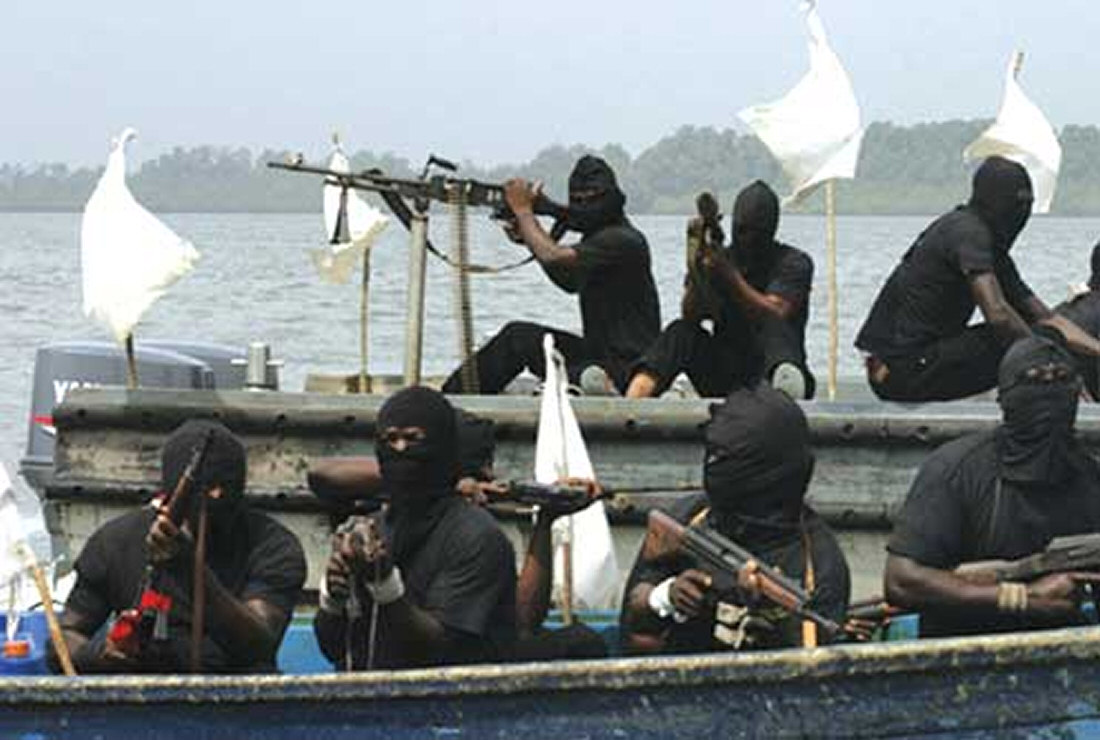Becoming a (bloody) pirate is something of a childhood dream for many people – I mean, anyone who had one of those miniature ships in the kindergarten playground knows what’s up. Or one of those Playmobile pirate ship sets, or Lego for that matter – if we had never taken those out of the package, they would be worth a pretty penny (or pieces of eight) today. Still, it’s not something that people easily get into, for some reason, even though it’s not necessarily hard. For kicks and giggles, and for a look at how easy pirating can be, we’ll take a look at what a pirate is, and how you (or anyone) can become one. And no, we’re not talking about ripping CDs at home and putting torrents on the internet. We’re talking about the real kind.
What’s a Pirate?
It’s not complicated.
1. a person who robs or commits illegal violence at sea or on the shores of the sea.
2. a ship used by such persons.
3. any plunderer, predator, etc.
One of the things that seems to confuse people, is that piracy seems to have been legal for some people. That’s not strictly true, and it’s not strictly untrue, either. Privateers (or corsairs or buccaneers) were sanctioned pirates, working for a government in wartime, to plunder enemy ships. That practice isn’t allowed anymore, so we won’t dwell on the privateers. You can’t be a privateer today – pirates are all that’s left, so we’ll stick to how you can become one of those.
Where are they?
Pirates, surprisingly, are pretty much everywhere. There’s always a risk of running into some kind of pirate or other, but the southern hemisphere has comparatively more than the northern. The seas of the northern hemisphere are mostly linked to countries who patrol their waters far more than the southern, and NATO presence is always a threat to pirates. There’s not a coalition in the world with more floating firepower than NATO, somewhat thanks to the US, and somewhat thanks to the seafaring nations of Scandinavia and Northern Europe.
If you want to become a pirate, you should think about heading for warmer waters than the north Atlantic and North Sea, outside Africa or South America. There’s also another option, and we’ll take a look at that a little later.
Who are they?
Since the beginning, pirates have been made up of people from every walk of life, from rich noblemen to desperate farm hands and manual laborers. There has always been an initial cost to being a pirate, which we’ll glance at, but many traditional pirates either stole their ships, or took them from the original owners and captains by violence or duels. The modern pirate is nothing different, though some people compare them more to mercenaries than pirates, depending a little on their governors, goals and organization.

The pirates we hear most about are Nigerian or other West African operations, usually organized by and funding local war lords or tribes, functioning, like already mentioned, more like mercenaries than traditional pirates, who worked mostly for themselves. Somali pirates are more sophisticated than most of us would think, often using high tech gear like satellite phones and GPS systems, checking blogs and websites to get travel routes for ships, etc. During their raids, they’ve also been known to be equipped with night vision gear and other tactical resources. Somali pirates are also interesting, because they often operate in a very widespread system that reaches into the daily life of many people. Small communities in Somalia will, for instance, often receive a percentage of the pirate “loot”, which goes toward schools, hospitals and infrastructure, making them a normal and valued part of society. Go figure.
What’s the loot?
The days of pirates plundering gold and valuables, and then bury it on a secret island somewhere, is mostly gone. Sorry, bud. There are some examples to the contrary, of course, but for the most part, pirates today are all about the ransoms. They’ll take over a ship, stop it, and then demand that the owner(s) pay a ransom to have them release the ship, which then goes on with its voyage to wherever it’s heading.
Perhaps surprisingly, this works. Shipping agents and owners will pay up the ransom, is usually around 2,5 million dollars, and each pirate will get from 30 000 to 75 000 US greenbacks for each job. The rest is divided between organizers, community, equipment, etc. A pirate raid can often be mustered for around 30 grand, so this is high risk, but low investment with a massive RoI. In short; not bad.
So, How to Become One?
We’re going to give you a simple example of how relatively easy and strangely lacking of peril it can be to become, and be, a pirate.
This February, a ship called FV Viking met its final resting place in Indonesia. That’s unfortunate for the pirates who operated it, of course, but before the mistake of moving into Indonesian waters, FV Viking had an extraordinary run.
FV Viking went on a spree of illegal fishing some 13 years ago, concentrating its efforts mainly around Antarctica, and making millions in profits while doing so. For over a decade, the ship was spotted only 18 times, only a little over once per year, was hunted by Greenpeace, wanted by a score of countries, and still evaded capture. That, in just a few words, describes how easy it is to be a pirate. Whether those pirates are hunting for fish or ransom money, the chances of getting caught on the seas is slim. We might also mention that FV Viking several times slipped through the grasp of official searches both by sea and air, as have the other ships described as the “6 Bandits”.
In theory (and indeed in practice), very little “hardware” is needed to furnish a band of pirates. FV Viking was a relatively large ship, able to weather the Antarctic seas for years and years, but that doesn’t mean it was a massive investment. Buying a 4000-5000 ton reefer would run you about 3 million dollars. On the other hand, you also see massive, 45,000 ton storage barges for about 5 million.
Going for something smaller, faster and more maneuverable might be a better idea than that, however. How about a supply vessel? These are built to last, to handle rough seas, and to deal with a vast array of situations. Something like this, for about 300,000 dollars? Seems like the perfect choice for the budding pirate. It’s still a lot of money, of course, but there are a million ways of financing something like that.
Those who are a little more advanced might find that there are hundreds and hundreds of former military ships available for sale, stripped of weaponry, of course, but with all the rest of their capabilities intact. Something like this, for 1.2 million dollars in Croatia, perhaps? Or this smaller one, for 68,000 dollars in Sweden? Drumming up 70 000 dollars is not that much of a magic trick, and while a mine sweeper may not be ideal for any longer stretch of time or for vast open waters, it’s certainly a fine, fast, first mission vessel that can support a pirate ransom operation.
1: Get a crew together.
Preferably with a little starting capital each. 10 people, 10 grand each. That’s all you need.
2: Find a ship.
Go for the Swedish mine sweeper if you’re starting out with 10k each. That should get you a tank of fuel as well.
3: Pick your battles.
Where do you want to go today?
4: Study.
Information is the key. Find shipping lanes, a nice, lawless port to get fuel and gear, and pick your target ship.
5: Be ready.
You could get caught. Chances are usually slim, but there’s always a possibility. You could get in a fight. Unlikely, since most transport ships are unarmed and docile, under orders to comply with demands. Other pirates are a different matter, of course.
You will also need a way to channel your money, divide it, perhaps justify it, and you’ll need to be able to take care of your ship, fuel it, furnish it, feed yourself and your crew, etc. Financial security isn’t our speciality, but having a scrupulous accountant on your team won’t hurt, that’s for sure.
Our slight disclaimer
Pirating is, and always has been, the same as stealing. Whether you’re stealing fish or money, gold or people, pirating is not something that you should ever try. Our article here is simply an illustration of how easy it is, and how slight the chances of getting caught actually are.
There are pirates and ships out there on the waters which have been pirating for over a decade without getting caught – far more than the “6 Bandits” or FV Viking. Some pirating support actual communities, some pirating are simply selfish stealing of other people’s materials and/or money. While that seems alluring, remember that most pirates do indeed meet unfavorable ends, either by violence, law or nature itself.
Don’t be a pirate.
